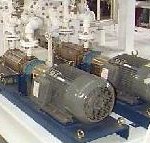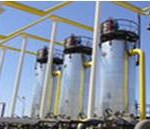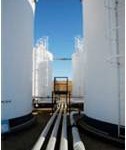 What is Process Integration and How Can it Help You?
What is Process Integration and How Can it Help You?
Process integration is a systematic method of optimising your process and utility systems to reduce both investment and ongoing operating costs. The method can be performed at any time (during design, evaluating retrofit options, etc).
However, clearly the best time to perform an analysis is immediately before front end engineering (FEED), when there is a planned development or modification. Earlier, and the details of the study tend to be cumbersome, later and the results cannot be fully implemented.
Typical process integration methods focus on
- thermal energy
- water consumption
- hydrogen
- atmospheric emissions
 Some of Our Examples of Using Process Integration
Some of Our Examples of Using Process Integration
- We have performed traditional heat integration analyses to reduce hot utility requirements. One study showed how to reduce hot utility requirements in a fractionation plant from about 55 MW to about 42 MW, by adding 1 heat exchanger, two pumps, and some piping modifications. Working with the client, we changed the study to add no extra exchangers, and the piping modification reduced hot utility requirements from 55 MW to about 49 MW.
- We have used a pinch analysis on a steam boiler conversion (changing from liquid fuel oil to natural gas fuel). The change in heat release and the fixed location of the heating coils produced an unusual situation where measuring stack temperature was not a measure of efficiency (the flue gas was pinched inside the boiler). Prior to our work, management did not understand what was happening. Our analysis and companion graphs made this point crystal clear, and management understood fully.
- We have taken the concept of process integration to an alternative use by demonstrating that process integration can by systematically used to reduce the weight of an offshore oil and gas processing platform.
- We have used process integration to quickly show a process in preliminary design that was believed to be utility constrained was actually process constrained.
Click here for a list of some of our more interesting findings and results.
 When Should a Process Integration Study be Executed
When Should a Process Integration Study be Executed
While the analysis can be performed at any time, clearly the best time is immediately before commencing front end engineering (FEED) of a development or modification.
No matter what the economic climate, improving efficiency is always beneficial to the profitability of a processing facility. Integration is a powerful tool that gives plant operators and project managers the chance to find a more optimal way. Whether for the construction of a new facility, or modification of an existing facility, integration can help save money through increased efficiency and reduction of waste.
Even if new projects or modifications are not in development, having the knowledge of the efficiency of the existing base case becomes useful in identifying areas for potential cost improvements.
 Our Process Integration Offer
Our Process Integration Offer
Every business is seeking an advantage. It could be return on equity, reduction in operating costs, optimising capital expenditure, keeping ahead of competitors, etc.
We provide an avenue to attain some or all of these ambitions through our lateral solutions. Many companies have been significantly rewarded by exploring and then applying process integration findings and results. We complement academic theory with practical applications that result in outstanding solutions.
Click here to learn more about our unique process integration services.